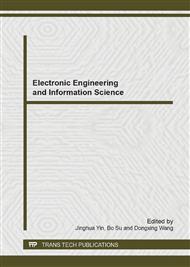p.647
p.653
p.657
p.663
p.668
p.673
p.677
p.683
p.688
CHP Microgrid Optimized Operation Based on Bacterial Foraging Optimization Algorithm
Abstract:
CHP system with Energy saving, environmental protection, economic and other characteristics,have good prospects for the development and application value.This paper directe a micro grid system consisted by photovoltaic cells, wind turbines, fuel cells, microturbines, auxiliary boilers, thermal energy storage systems and batteries and heat load and electrical load.Considering various distributed power generation costs, environmental costs and micro-grid equipment maintenance costs,To meet the constraints of micro-grid operation, optimization of the different micro-grid distributed power and energy storage system power output, make the system's total operating costs are minimized.This paper analyzes the economic and environmental of micro-grid optimal operation characteristics, given a model of CHP micro-grid.For the cost of power generation and emissions of different weights, using bacterial foraging optimization(BFO) algorithm,through a numerical example verified the Correctness and effectiveness of mathematical model and optimization algorithm .
Info:
Periodical:
Pages:
668-672
Citation:
Online since:
July 2014
Price:
Сopyright:
© 2014 Trans Tech Publications Ltd. All Rights Reserved
Share:
Citation:


